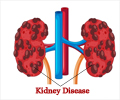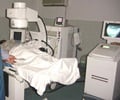A study published in the November issue of the urology journal BJUI says that active surveillance of small kidney masses is a safe and effective alternative to immediate surgery.

"The incidence of kidney cancer has been increasing in Europe and the USA since the 1980s and the use of more sophisticated imaging techniques means that smaller masses of less than 4cm are being picked up at earlier stages" says lead author Dr Nilay Patel.
"This has led to an increased rate of surgery for small kidney masses, but the benefits of this remain unclear. Conflicting reports on improvements in death rates for kidney cancer over the last few years suggest that increased detection may not necessarily be improving survival rates for patients with smaller tumours inside their kidney."
A total of 202 patients with 234 small renal masses of less than 4cms inside their kidney - classified as T1a – were identified.
Ninety were managed with partial nephrectomy (where only the diseased part of the kidney is removed), 41 with a radical nephrectomy (where the entire kidney is removed) and 71 with active surveillance (where patients are monitored for disease progression).
Key findings included:
Advertisement
- Over a median follow-up of 34 months, the mean growth rate of the kidney masses in patients who were under active surveillance was 0.21cm. However, 53 per cent of the small renal masses in these patients showed negative or zero growth.
- No statistically significant differences were observed in overall and cancer-specific survival rates for patients who were under active surveillance or received partial or radical nephrectomy.
- The overall survival rates were 83 per cent for active surveillance, 80 per cent for radical nephrectomy and 90 per cent for partial nephrectomy.
- The cancer specific survival rates were 99 per cent for active surveillance, 93 per cent for radical nephrectomy and 97 per cent for partial nephrectomy.
"The results of this study support the need for a multicentre, prospective randomised trial to compare how active surveillance and surgery compare when it comes to managing such patients."
Advertisement
Source-Eurekalert















